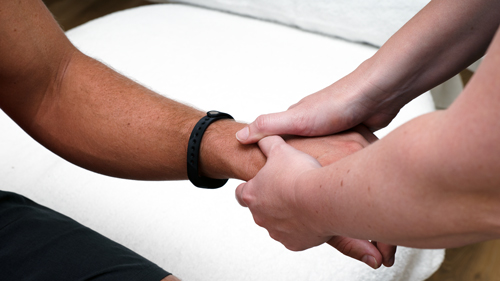Osteoarthritis: From Wear-and-Tear to Wellness
Posted Friday, Sep 8, 2023 by . Filed under General
Osteoarthritis, often referred to as "wear-and-tear" arthritis, is a prevalent joint condition that affects millions of individuals worldwide. Despite its common occurrence, misconceptions and inadequate knowledge about osteoarthritis persist.
Let's look at the causes, symptoms, risk factors, and management strategies of osteoarthritis.
The Basics of Osteoarthritis
Osteoarthritis is a degenerative joint disease that primarily affects the cartilage – the protective tissue covering the ends of bones in a joint. This cartilage allows for smooth and pain-free joint movement. However, in individuals with osteoarthritis, this cartilage breaks down over time, leading to pain, stiffness, and reduced joint mobility.
Causes and Risk Factors
Although aging is a significant risk factor for osteoarthritis, it is not merely a consequence of growing older.
Genetic factors can make certain individuals more susceptible to the condition, as can joint injuries, obesity, and mechanical stresses placed on joints due to occupation or physical activities.
Additionally, certain medical conditions such as metabolic disorders and joint abnormalities can contribute to the development of osteoarthritis.

Symptoms
The symptoms of osteoarthritis can vary widely, but they typically involve:
- joint pain,
- stiffness, and
- limited range of motion.
- Morning stiffness and discomfort during or after activity are common complaints.
- As the condition progresses, joints might become swollen and tender.
In advanced cases, the pain might even affect daily activities and disrupt sleep patterns. - While osteoarthritis can affect any joint, it is most commonly found in weight-bearing joints such as the knees, hips, and spine, as well as in the hands.
Diagnosis
Diagnosing osteoarthritis involves a combination of:
- clinical evaluation,
- medical history assessment, and
- imaging studies such as X-rays and MRI scans.
These tools allow healthcare professionals to visualize the extent of cartilage loss and joint damage, aiding in accurate diagnosis and treatment planning.

Image by: https://www.injurymap.com/free-human-anatomy-illustrations
Management Strategies
While there is no cure for osteoarthritis, several strategies can effectively manage the symptoms and improve the quality of life for individuals affected by the condition:
Lifestyle Modifications:
Maintaining a healthy weight reduces the mechanical stress on joints, particularly weight-bearing ones. Regular exercise, including low-impact activities like swimming and cycling, helps strengthen the muscles around affected joints, providing added support.
Pain Management:
Over-the-counter pain relievers and anti-inflammatory drugs can provide temporary relief from pain and inflammation. However, long-term use should be supervised by a healthcare professional.

Manual Therapy:
Our practitioners can design customized treatment and exercise programs that improve joint flexibility, reduce pain, and enhance overall joint function.
Assistive Devices:
Devices such as braces, canes, and orthotic shoe inserts can help alleviate pressure on affected joints and improve mobility.
Injections: Corticosteroid injections can provide short-term relief by reducing inflammation in the joint. Hyaluronic acid injections, on the other hand, can help lubricate the joint and alleviate pain.
Surgical Interventions
In severe cases where other treatments are ineffective, surgical options like joint realignment, resurfacing, or joint replacement might be considered.

Osteoarthritis might be a common condition, but it is far from a minor inconvenience. It can significantly impact an individual's quality of life by causing chronic pain and limiting their ability to perform everyday activities. Recognizing the risk factors, understanding the symptoms, and adopting a proactive approach to managing osteoarthritis are crucial steps in mitigating its effects.

If you or someone you know is experiencing joint pain or other symptoms suggestive of osteoarthritis, seeking medical attention is essential. With early diagnosis and a comprehensive treatment plan, individuals can effectively manage the condition and continue to lead fulfilling lives, making the most of their precious joints for years to come.
